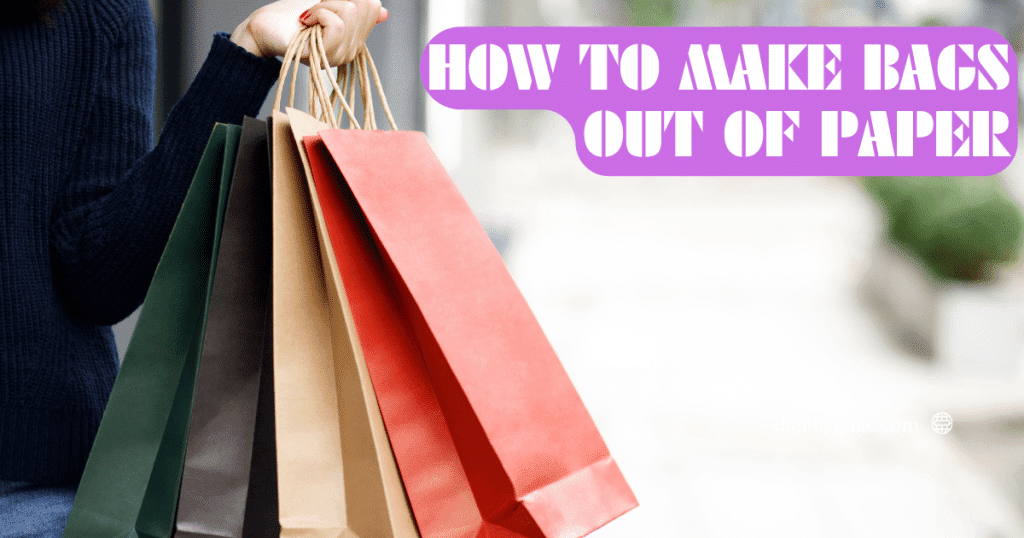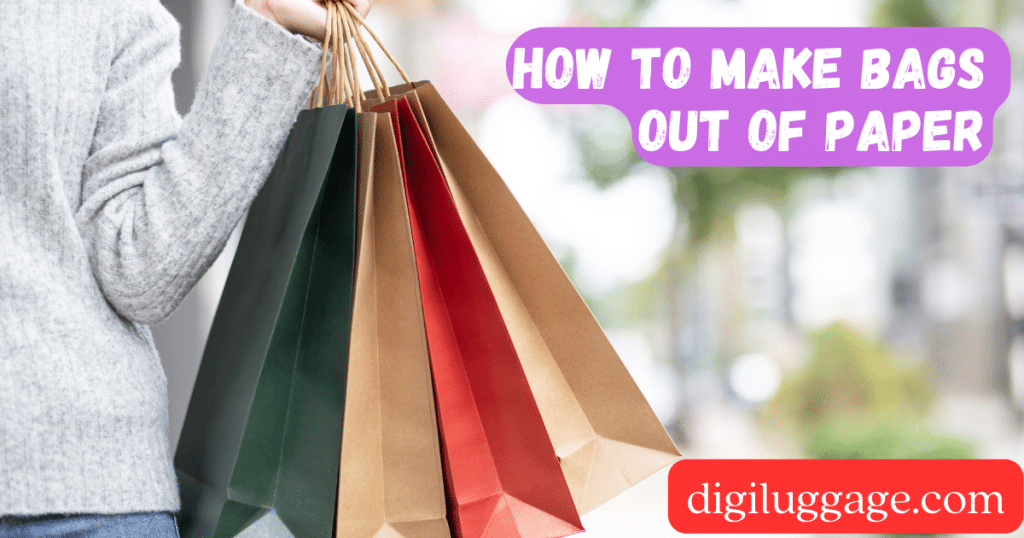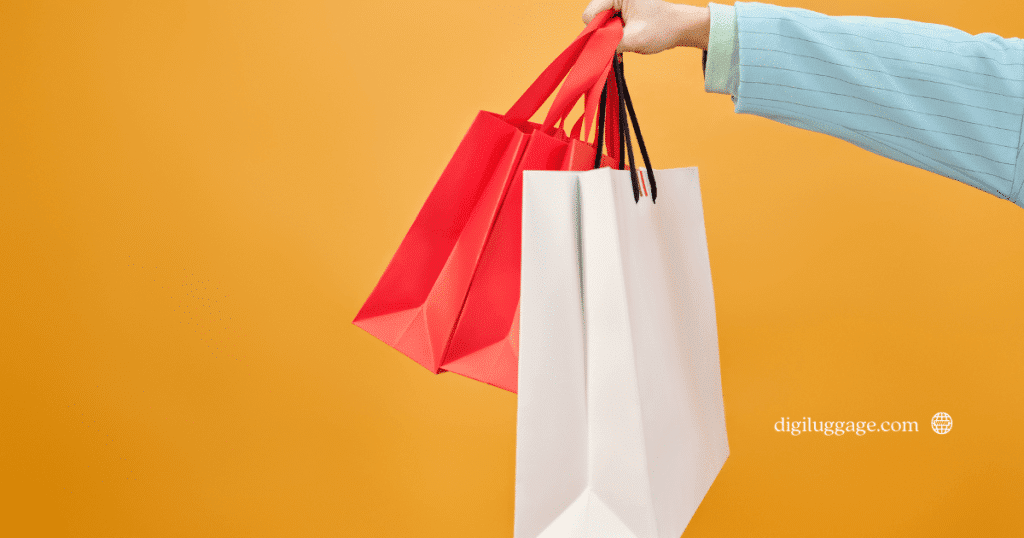
Introduction
Extravagant design trends and eco-friendly initiatives have made paper bags a highly sought-after. But did you know you can create stylish and durable paper bags at home? This comprehensive guide will walk you through the step-by-step process of making your own paper bags, from selecting the right type of paper to putting the finishing touches on your masterpiece. By the end of this tutorial, you will be equipped with the knowledge and skills to craft beautiful, functional bags out of paper, perfect for various uses.
Key Takeaways:
- Choose the right paper: Select sturdy paper such as kraft or cardstock for durability and strength.
- Measure and cut accurately: Precise measurements ensure your paper bag comes together neatly and securely.
- Score and fold carefully: Use a bone folder or ruler to create crisp, clean folds for professional-looking bags.
- Use strong adhesive: Secure the edges and folds of the bag with a strong adhesive such as glue or double-sided tape.
- Add reinforcement for stability: Add cardboard or extra paper layers to the base and handles for added strength.
- Personalize with embellishments: Add your personal touch with ribbons, stickers, or custom-printed designs to make your paper bags unique.
- Practice and refine your technique: The more you make paper bags, the better you’ll get at perfecting your skills and creating high-quality bags.
Preparing for Your Paper Bag Project
If you are planning to make bags out of paper, there are a few things you need to prepare in advance to ensure a smooth and successful project. From considering important factors to gathering essential materials and tools, proper preparation will play a crucial role in the outcome of your paper bag project. Here are some key steps to get you started on the right path.
Factors to Consider Before Starting
Before diving into your paper bag project, there are several factors you should take into consideration. Firstly, consider the purpose of the bags you are making and the weight they need to hold. Consider the size and shape you want for your bags and any specific design elements or decorations you plan to include. Additionally, assess the level of complexity you are comfortable with regarding the bag’s construction and any potential challenges you may encounter along the way. Any potential obstacles or limitations should be carefully planned for in advance.

Essential Materials and Tools Needed
Paper, scissors, ruler, pencil, and glue are the basic materials and tools for making paper bags. You will also need decorative elements like ribbons, stickers, or markers to personalize your bags. To ensure strength and durability, consider using thick and sturdy paper or adding a protective coating layer. Understanding basic folding and cutting techniques will also be essential in creating a well-constructed and visually appealing paper bag.
Your paper bag project will require careful planning and attention to detail to achieve the best results. Gather all the necessary materials and tools and familiarize yourself with the bag-making process before you begin. With the right preparation and mindset, you can create unique and functional paper bags that will serve your purpose well.
How-To: Basic Paper Bag Creation
While creating a paper bag from scratch may seem daunting initially, it is simple and can be a fun and rewarding craft project. Whether you’re looking to create custom gift bags, party favours, or eco-friendly packaging, making your own paper bags is a sustainable and budget-friendly option. This step-by-step guide will show you how to create your own basic paper bags with just a few materials and minimal effort.
Cutting the Paper to Size
The perfect paper bag begins with cutting the paper to the desired size. Start by selecting a sturdy paper material, such as kraft paper or cardstock, suitable for the weight and size of the items you plan to carry in the bag. Use a ruler and pencil to mark the bag’s dimensions on the paper, then carefully cut along the lines with scissors or a paper cutter. This will form the basic shape of the bag and provide the foundation for the next steps in the process.
Once the paper is cut to size, you can customize the bag by trimming the edges or adding decorative features, such as scalloped edges or a fold-over flap. These embellishments can elevate the appearance of the bag and make it more visually appealing to the recipient.

Folding and Gluing Techniques
Any successful paper bag creation involves precise folding and secure glueing techniques to ensure durability and functionality. Begin by scoring the paper along the fold lines using a bone folder or the edge of a ruler. This will create clean, straight fold lines that make it easier to assemble the bag.
Glueing is a critical step in securing the edges and flaps of the bag. Use high-quality craft glue or double-sided tape to ensure the seams are strong and reliable. Press firmly on the glued areas to ensure a secure bond, and allow the glue to dry completely before proceeding to the next step in the bag-making process.
Tips for Customizing Your Paper Bags
Not all paper bags are created equal, and that’s good. Customizing your paper bags can make them stand out and leave a lasting impression on your customers. Here are some tips for personalizing your paper bags to make them unique to your brand:
- Consider adding handles or reinforcements to make your bags more durable and user-friendly
- Experiment with different decorative ideas to make your bags more visually appealing and memorable
- Use your brand’s colors, logo, or other custom designs to make your bags instantly recognizable to your customers
The possibilities are endless, and with a little creativity, your paper bags can become powerful tools for reinforcing your brand identity and leaving a lasting impression on your customers.
Adding Handles and Reinforcements
Reinforcements, such as cardboard inserts or double-layered bottoms, can make your paper bags more durable and capable of carrying heavier items without tearing. Handles can also be added for easier carrying and a more polished look. Considering these additions can elevate the functionality and professionalism of your paper bags, making them more convenient for your customers to use.
Decorative Ideas for Personalization
The visual appeal of your paper bags can be enhanced with various decorative ideas. This can include using custom stamps, stickers, or printed designs to add a personal touch. You can also experiment with different embellishments, such as ribbons, bows, or even personalized tags, to give your bags a unique and eye-catching look.
A well-designed paper bag can be a powerful tool for promoting your brand and leaving a lasting impression on your customers. By customizing your paper bags with your brand’s unique elements and incorporating these decorative ideas, you can create a memorable and distinctive packaging solution that sets your brand apart from the competition.

Conclusion
Reflecting on making bags out of paper, it becomes clear that this innovative and eco-friendly solution provides an alternative to traditional plastic bags. Anyone can create stylish and sturdy paper bags by folding and securing the paper, reinforcing the handles, and adding decorative touches. With the increasing focus on sustainability and reducing plastic waste, making bags out of paper is a practical and creative way to contribute to a greener environment. By adopting this method, we can encourage the use of reusable and biodegradable materials while also enjoying the process of crafting our own unique bags.
FAQ
Q: What materials are needed to make bags out of paper?
A: To make bags out of paper, you will need sturdy paper (such as kraft paper or cardstock), rulers, scissors, glue, and decorations (if desired).
Q: What are the basic steps to make a paper bag?
A: The basic steps to make a paper bag include measuring and cutting the paper to size, folding and creasing the paper to create a bottom and sides, and securing the edges with glue.
Q: What type of paper is best for making paper bags?
A: Sturdy paper, such as kraft paper or cardstock, is best for making paper bags as it provides durability and strength.
Q: Can decorations be added to the paper bags?
A: Yes, decorations such as ribbons, stickers, or drawings can be added to the paper bags to enhance their appearance and customize them to your preference.
Q: Can there be different designs or styles of paper bags be made?
A: Yes, paper bags can be made in various designs and styles, such as flat bags, gusset bags, and pillow bags, each with unique folding and shaping techniques.
Q: How can I make the paper bags more environmentally friendly?
A: To make paper bags more environmentally friendly, consider using recycled paper or incorporating sustainable practices into the bag-making process, such as minimizing waste and choosing eco-friendly decorations.
Q: What are some common mistakes to avoid when making paper bags?
A: Common mistakes to avoid when making paper bags include using too thin and flimsy paper, not securing the edges properly with glue, and overloading the bags with heavy items beyond their capacity.